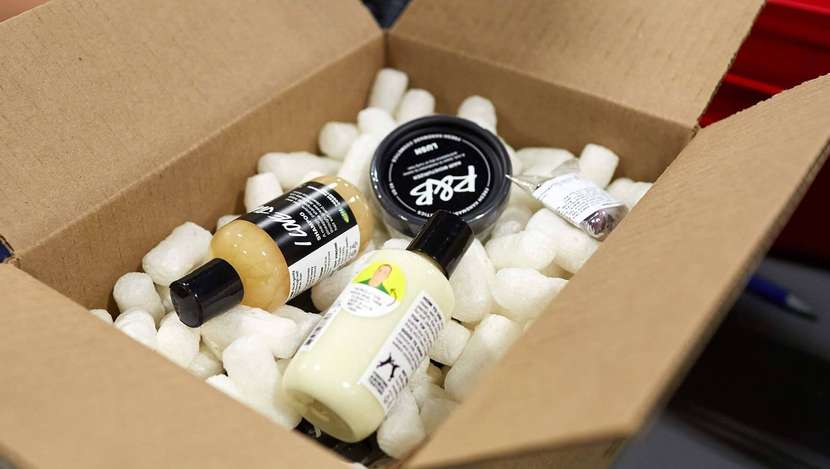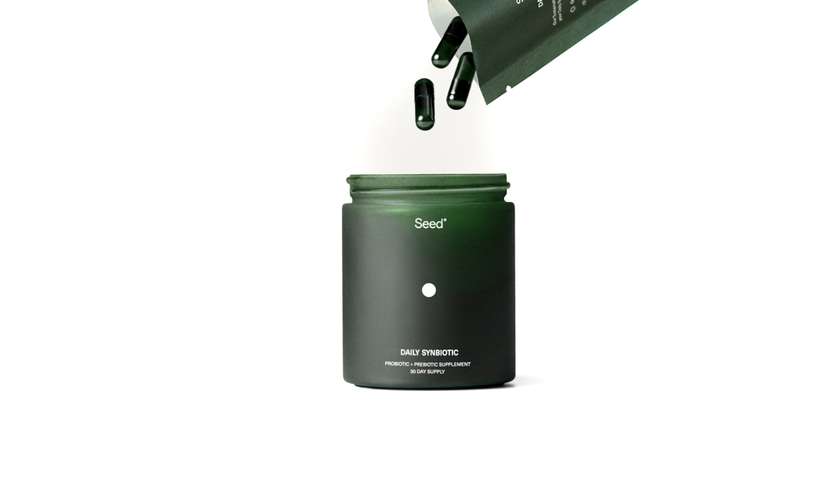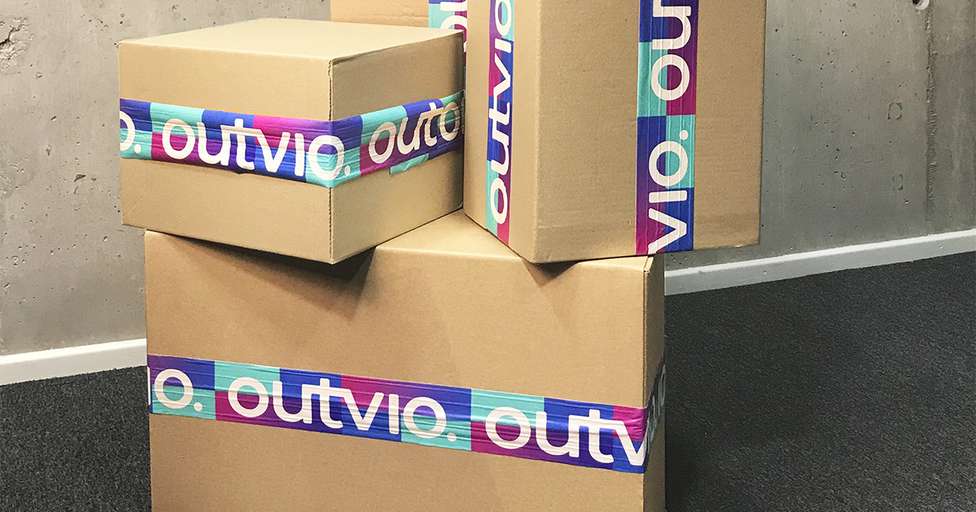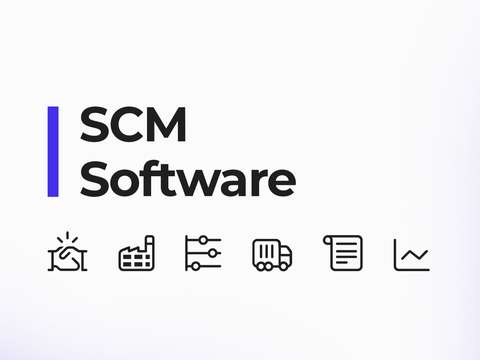eCommerce packaging is a crucial part of any online business that sells physical products, as it protects products during the transportation process and reinforces the brand image.
Although most consumers and retailers are familiar with different types of packaging and packing materials, the numerous and continuous developments in the eCommerce industry, as well as the potential impact of packaging on eCommerce users, make it necessary to remain up to date when it comes to packaging trends and new alternatives and solutions.
Find out how to reduce packaging-related costs for your eCommerce business and welcome new materials to overcome some of the most common drawbacks of paper, cardboard, wood or plastic.
What is eCommerce packaging?
Packaging is the term used for all material that covers and protects goods. This includes primary packaging, which contains the product itself; secondary packaging, which protects the container of the product; and tertiary packaging, which is the exterior packaging that’s visible when products are shipped.
Understanding the different types of packaging is incredibly important since we generally associate eCommerce packaging with only the cardboard boxes that couriers carry in their delivery vans. While those boxes are indeed an important aspect of packaging, we can’t forget that packaging goes beyond that aspect and plays a fundamental role in the rest of the supply chain.
Many shipping companies don’t even accept items with inadequate packaging since they know doing so can lead to shipping issues. These companies prefer to avoid such items entirely — or to apply a surcharge to make sure that they don’t lose money by accepting them.
Furthermore, packaging for eCommerce has become another key brand element. Great firms have used it to build customer loyalty and retention by adapting the packaging to customers’ interests. So, even if you sell your products online, you can make an impact through the physical experience every time one of your customers makes a purchase.
Types of packaging by materials
The possibilities of the current packaging market make some materials — such as paper, cardboard and plastic — more accessible and affordable than others.
However, wood, glass and aluminum, together with some more recent inventions, are also gaining their spot on the market thanks to their recyclability, reusability or disposability, as well as for the protection they offer.
In any case, when determining the appearance of an eCommerce package, it’s important to consider the dimensions because dimensional weight can rapidly increase your shipping costs.
Paper packaging
Paper-based packaging materials offer the best solution in terms of sustainability, protection and price.
There are many types of paper packaging, and their applications for interior packaging can be diverse: from inserts that fix a product in place to prevent it from moving during the delivery process to fillings — such as kraft paper, tissue paper, and shredded paper — that cushion the items while they’re being transported.
The main advantages of paper packaging are their cost, their level of protection and their environmental impact.
Cardboard packaging
Cardboard is the most common packaging material nowadays, and it’s used in everything from boxes to mailers. Most conventional dimensions and weights are covered with this simple solution.
In fact, retailers can ship parcels of up to 350 kg using this cheap, effective and affordable material. Depending on the weight of the products, you can use single-channel cardboard packaging (parcels up to 20 kg), dual-channel cardboard (for packages up to 70 kg) or triple-channel cardboard (for orders of up to 350 kg).
Cardboard packaging isn’t only used for exterior packaging; shredded corrugated cardboard can also be a wise choice if you need to protect and cushion items traveling inside boxes. This type of filling offers more protection than shredded paper, thanks to its higher density — and it can be easily recycled.
Plastic packaging
Plastic packaging is very common in B2B supply chains because of its price and accessibility. Plastic packaging can also be found as both interior and exterior packaging.
Interior packaging featuring plastic materials normally consists of bubble wrap or air pillows, while exterior packaging made from plastic typically includes mailers or envelopes.
Plastic has garnered a bad reputation lately because of the impact it has on the environment, but, for this same reason, it’s one of the most recyclable materials at the moment.
If your products have special requirements that can only be fulfilled by plastic (or at least fulfilled at a reasonable price), one way to avoid being labeled as unsustainable is to use recycled plastic in your eCommerce packaging.
New sustainable packaging materials
The environmental impact of shipping has become an important topic in recent years, as the press, customers, and environmental organizations raise concerns about sustainability.
Because of this, the choice of materials — whether they’re going to be used for the products themselves or for packaging — among many other aspects of eCommerce, needs to be carefully considered in order to meet the demands of customers, media and investors alike.
As with any business trend, sustainability is an opportunity that many companies are taking advantage of, which means that sustainable materials are becoming more accessible and affordable to all. This is our selection of the top sustainable packaging materials:
Packing peanuts made of corn
Although traditionally made out of plastic, packing peanuts have now been reinvented to offer a sustainable solution that can oftentimes be dissolved in water and later used to water plants or simply disposed of in a way that doesn’t harm the environment.

Source: Lush
Compostable sachets or bags
Corn, mushroom, seaweed, cellulose and wood pulp are the protagonists of bio-based materials that can be composted at home or at special facilities and are being used for primary packaging, such as bottles and other types of containers, as well as filling materials, sachets and mailing envelopes. Although they come at a price, glassine, cellulose, cornstarch and other compostable materials may be the perfect solution if your customers are environmentally conscious.

Source: Seed
Make a difference in the unboxing experience
Choosing packaging materials that are both protective and affordable is important, but let’s not forget that for an online business, the moment when the parcel arrives is the first physical touchpoint a customer has with the brand. The unboxing experience is therefore a brand aspect that can be as crucial as the product itself.
For that reason, customizing the packaging used by your eCommerce business as much as it is possible (or profitable) should be one of your main goals in order to take maximum advantage of each delivery. Every element from the container holding the product to the very last piece of packaging, can be customized. But whether it’s profitable for your business — or valued by your customers — is a whole different story.
So, let’s start with the basics.
Assuming you have all the primary packaging nailed down for your products, the next step is to figure out the secondary and tertiary packaging that your eCommerce business will use. Part of the secondary packaging is the filling.
Package filling
Although filling may not be necessary for non-fragile products, it’s still a sign of care and dedication when you add a box to that bottle or some tissue paper around that special garment.
If you sell “naked products” or items that can easily get damaged or broken, it’s highly recommended to invest in package filling that will not only protect the products but is also financially viable.
For this purpose, packing peanuts and shredded corrugated cardboard are some of the most used packaging materials in the eCommerce industry. However, there’s another possibility that will give your packages a special feel that will make you stand out from the competition…
Packaging inserts
If you’ve already implemented kitting in your business, or you work with a small catalog of products that are frequently ordered together or share the same container, customizing packaging inserts to match your box can be a game-changer. Not only will custom inserts help you maximize your brand impact with only the packaging, but they’ll also help you cut down on protective package filling that doesn’t do much for your brand — or the customer experience.
As an example, wines are a product that often benefits from the usage of inserts. There’s a sense of luxury attached to them, and the presence of a sturdy element of protection will definitely help your customers overcome that initial fear of buying wine online.
The skincare industry, booming as it is, is also selling cosmetics products as “self-care” elements that should feel like a luxury on their own. For this reason, presenting the products in packaging inserts doesn’t only protect them — even though these items may not be especially fragile — but it also makes an impact on the perceived quality of the products by the customers.
Conclusions
Creating a memorable unboxing experience can be the competitive edge your business needs to generate repeat purchases and attract new customers. Because eCommerce packaging can considerably impact your profit margins and the customer experience, it’s important to be aware of the different packaging materials out there and to remain on-trend to take advantage of any opportunity to make your online store shine.
eCommerce packaging isn’t only a way to create a sublime purchasing experience, but it’s also one of the main contributors to the safe arrival of items — and the reduction of shipping issues due to damaged or broken products.
Now it’s a matter of putting all of this knowledge into practice by choosing those materials that best suit your products, brand and type of customer. And, if you really want to care for your customers during the delivery process, keep them notified about the location and status of their parcel so that they don’t miss that special order!
Sign up now and use the same tools as some of the biggest online retailers for a fraction of the price!




